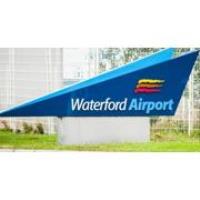In response to comments by Junior Transport Minister James Lawless that likened the Waterford Airport business case to buying a 'pig in a poke', Waterford Chamber CEO Gerald Hurley has emailed the Minister:
RE: Response to Dáil Comments on Waterford Airport Runway Extension Business Case
Dear Minister Lawless,
I am writing in response to your comments yesterday in the Dáil regarding the funding and business case for Waterford Airport’s runway extension. While I appreciate your willingness to consider further revisions, I must address some critical misunderstandings that your remarks suggest.
First, it seems evident that you have not reviewed any of the Waterford Chamber pre-budget submissions or lobbying correspondence over the past number of years, where transport has consistently been identified as one of the top priorities for the South-East region. Before we delve into specifics about Waterford Airport, it’s essential to clarify that Waterford City has a catchment population of c.600,000 people within an hour's drive. This is the largest regional catchment area outside Dublin and, notably, the only region of its size not served by a commercial airport.
You mentioned that the South-East is already well-served by transport, particularly highlighting the M9 motorway to Dublin. While the motorway is certainly a valuable asset, the cap on passengers at Dublin Airport and the escalating traffic congestion in the capital are pressing issues that the government must address. Is balanced regional development not a key government priority? A well-serviced airport in Waterford would alleviate pressure on Dublin Airport while also supporting economic growth in the southeast, contributing directly to regional balance and infrastructure improvement.
Furthermore, other modes of transport in the region are not as robust as you suggest. While we have decent road access to Dublin, the routes to Cork and, more significantly, Limerick are totally inadequate. The N24 Limerick–Waterford road, in particular, contains some of the worst stretches of national primary road in the country, severing the South-East from the Midwest and Galway regions. This disconnect also hampers access to Rosslare Europort, which is a crucial entry point for many visitors to Ireland. Additionally, while the region has an underutilised rail network, Waterford is the only city in the country with direct access between a port and the rail system. This should be recognised and developed further as a national asset.
Returning to your remarks about the business case for Waterford Airport, it is important to address your concerns. You questioned the projections for passenger traffic and described the State’s involvement as being asked to “buy a pig in a poke.” However, these concerns fail to acknowledge that Waterford’s past performance was constrained by the limitations of the current runway, which only accommodates propeller aircraft—a well-known loss-making model. With the proposed runway extension, the airport would be capable of handling larger jet aircraft, which carry three times the passengers and are far more profitable. The projections for passenger growth are not only realistic, but they also factor in Ryanair’s commitment to scheduling flights once the extension is complete. The business case has been thoroughly stress-tested by an independent aviation expert commissioned by Grant Thornton, further validating its robustness.
In terms of value for money, the Waterford Airport development offers an excellent return on investment, with minimal risk to the taxpayer. The present proposal requires the private consortium to fully deliver the runway extension, all necessary built infrastructure, and secure all runway certifications and operational licenses before any government funding is drawn down. This means that approximately €30 million in expenditure will be incurred by the private sector before any capital from the government is required. At that point, taxpayer exposure is minimal.
When compared with Dublin Airport's expenditure of €340 million for a new runway, the investment in Waterford is significantly more cost-effective and promises substantial returns. Once operational, Waterford Airport is expected to generate approximately €500,000 annually in taxes, PRSI, and USC from direct employment alone, with additional benefits arising from indirect employment and service industries. Furthermore, the return to the exchequer through VAT on construction is projected to amount to €3.5 million.
Additionally, as referred to above, Ryanair, Europe’s largest airline and the second largest globally, has confirmed, in a letter which I have seen, its commitment to scheduling flights once the runway is extended. This support has already been communicated to the Department and serves as a strong endorsement of the project’s viability and potential success.
You also mentioned the decline in figures from 2008 to 2016, when scheduled services ceased at the airport. This drop was due to the same capacity limitations that the runway extension aims to resolve. Once the airport is equipped to handle larger aircraft, Waterford will see a sharp increase in air traffic, aligning with the region’s growing demand and addressing the need for additional airport capacity in Ireland.
Perhaps most crucially, it seems that you may not fully grasp the strategic value that Waterford Airport offers, not only to the South-East but to the nation as a whole. Its role in supporting offshore wind energy projects along the southeast coast and its ability to foster tourism, trade, and regional connectivity are vital. While the motorway to Dublin is a strength, it does not substitute the need for an operational regional airport. Indeed, the environmental and logistical benefits of having a local airport cannot be overstated.
Finally, I would respectfully suggest that before making further comments on this issue, you take the time to visit Waterford and its airport and consult with the stakeholders on the ground. This would allow you to make more informed decisions rather than drawing conclusions based on incomplete information. A visit would allow you to see firsthand the potential this project has for the region and how it aligns with national objectives for transport, sustainability, and regional growth.
However, time is of the essence. We are calling for a decision to be made regarding Waterford Airport before this Dáil dissolves. Any delay could push the timeline for revisiting the project under a new administration to 6–9 months, based on past experience. This delay carries a significant risk that the promoters, who are crucial to the project’s success, could walk away at any point in the interim. Immediate action is critical to secure this opportunity and prevent the region from losing a key driver of economic and infrastructural growth.
In conclusion, while I understand your call for a stronger business case, I believe the current plan is both comprehensive and strategic. The South-East is not over-served by transport infrastructure, and a fully operational Waterford Airport would play a crucial role in alleviating pressures on Dublin, improving regional connectivity, and contributing to Ireland's broader economic and environmental goals.
Best regards,
Gerald
Gerald Hurley
CEO
Waterford Chamber
Tel: 051 872639
Mobile: 086 2528093
www.waterfordchamber.ie



